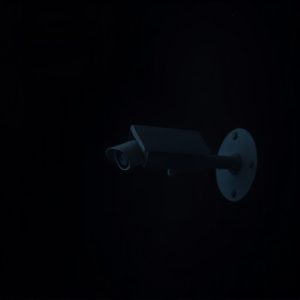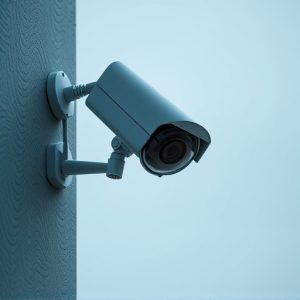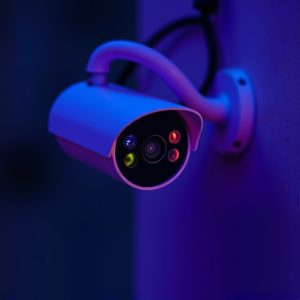Securing Your Space: A Guide to Hidden Security Cameras
Hidden security cameras serve as a discreet yet powerful tool in modern surveillance systems, offeri…….
Hidden security cameras serve as a discreet yet powerful tool in modern surveillance systems, offering high-definition monitoring while remaining inconspicuous to deter crime. These cameras are strategically placed in key areas to ensure visibility and capture evidence effectively, aiding in post-incident investigations by providing clear images of suspects. They can also be outfitted with real-time alert systems and analytical software to enhance security measures. While these cameras offer a proactive approach to safeguarding properties, it's crucial to operate them within legal privacy boundaries, securing consent from all occupants and adhering to surveillance laws. In terms of technology, the latest hidden cameras are compact, offering night vision or thermal imaging capabilities and motion detection for efficient monitoring. They connect to NVRs or cloud services for remote access, allowing users to monitor their premises from anywhere globally. Top models like the Panasonic HC-V770, D-Link DCS-932L, and Hikvision DS-2CD2085FWD-IS stand out with their advanced features and intelligent analytics, making them ideal for both home and business security needs.
title: Navigating the Privacies and Practicalities of Hidden Security Cameras
In an era where safety and surveillance intersect, hidden security cameras offer a discreet solution for safeguarding personal and commercial spaces. This article delves into the intricacies of these covert devices, exploring their applications and advantages, the legal framework surrounding their installation, the cutting-edge technology that powers them, and the best practices for effective placement and monitoring. Additionally, we evaluate top-of-the-line models available on the market to assist readers in selecting a hidden security camera that suits their specific needs.
Understanding Hidden Security Cameras: Applications and Advantages
Hidden security cameras serve as discreet yet powerful tools for safeguarding properties and monitoring activities. Their ability to go unnoticed deters potential intruders, as the presence of surveillance is a significant deterrent for criminal activity. These devices are strategically placed in environments where visibility is crucial for security, such as in retail establishments to prevent shoplifting or in residential areas to enhance home safety. They are often compact and designed with non-descript housings that blend seamlessly into their surroundings, whether it’s a wall outlet, a smoke detector, or a common household item.
The advantages of deploying hidden security cameras extend beyond deterring theft and vandalism. They offer valuable footage for investigative purposes post-incident, allowing for clear identification of perpetrators and potentially aiding in their apprehension and prosecution. Additionally, these cameras can be integrated with advanced software to provide real-time alerts and analytics, enabling property owners or security personnel to respond promptly to any unusual activity. This proactive approach to security not only helps in maintaining a safe environment but also provides peace of mind for homeowners and businesses alike. The data captured by hidden security cameras can also be used for operational improvements, such as optimizing store layouts based on customer traffic patterns or enhancing employee performance through discreet observation. Overall, the strategic placement and deployment of hidden security cameras offer a multifaceted approach to safety and security that is both effective and unobtrusive.
Legal Considerations When Installing Hidden Security Cameras
Hidden security cameras serve as a deterrent to potential intruders and provide valuable evidence should an incident occur. However, their installation must navigate a complex web of legal considerations. Privacy laws vary by jurisdiction, but generally, individuals are entitled to a reasonable expectation of privacy within their own properties. As such, when installing hidden security cameras, it is crucial to respect these boundaries to avoid infringing on privacy rights. In many regions, consent from all individuals occupying the space where the camera is installed is necessary. Additionally, surveillance laws dictate how recorded footage can be used and who has access to it. Users must ensure compliance with applicable laws, including notification requirements for tenants or residents in shared spaces. Adhering to these legal stipulations not only upholds privacy rights but also safeguards the legality of any potential evidence collected by hidden security cameras. It is advisable to consult local legislation and, if needed, seek legal counsel to ensure that the installation and use of hidden security cameras are conducted lawfully. Understanding and adhering to these legal considerations is paramount for responsible surveillance practices.
The Technology Behind Hidden Security Cameras: How They Work
Hidden security cameras are sophisticated devices designed with stealth in mind while maintaining high-quality surveillance capabilities. These cameras utilize advanced miniaturization technology, allowing them to be discreetly integrated into everyday objects or installed in inconspicuous locations. They are equipped with tiny lenses that offer wide-angle views, capturing a broad field of vision without revealing their presence. The images and footage they record are of a quality comparable to traditional security cameras, often featuring high-definition resolution.
The functionality of these hidden security cameras is supported by innovative digital imaging technology. They can operate in low-light conditions using night vision or thermal imaging capabilities, ensuring continuous monitoring regardless of ambient lighting. Additionally, many of these devices come with motion detection sensors that activate the camera upon sensing movement within their view, which helps to conserve storage space and battery life, especially in models that run on wireless power sources. These cameras are often connected to a network video recorder (NVR) or a cloud-based service for secure data storage, remote access, and real-time monitoring. This integration allows users to keep an eye on their property from anywhere in the world via smartphones or computers, ensuring that their premises remain protected against unauthorized access or activity.
Best Practices for Placing and Monitoring Hidden Security Cameras
When integrating hidden security cameras into your surveillance system, it’s crucial to consider their placement and monitoring for effective deterrence and evidence collection. Hidden security cameras should be installed in discreet locations that offer a clear view of entry and exit points, high-traffic areas, valuable assets, and any blind spots where traditional cameras may not provide adequate coverage. Ensure these cameras are positioned at a height that captures the faces of individuals clearly without being easily spotted. Additionally, they must be placed out of reach to prevent tampering.
Monitoring hidden security cameras requires careful selection of recording schedules and storage solutions. Choose cameras with motion-activated recording to conserve storage space and focus on areas of high activity or potential intrusion when unattended. It’s also important to regularly check the camera feeds, especially after significant events, to ensure that the footage is being captured as intended. Employ a reliable Network Video Recorder (NVR) or cloud-based service with secure login credentials for remote access to live and recorded video. Regular maintenance checks on cameras and recording equipment will help maintain optimal performance and reduce the likelihood of missing crucial moments.
Evaluating the Top Models of Hidden Security Cameras on the Market
When securing your premises with hidden security cameras, it’s crucial to evaluate the top models available on the market to ensure optimal protection and discretion. The Panasonic HC-V770 is a standout option, offering exceptional video quality and advanced features such as night vision and motion detection. Its miniature size allows it to blend seamlessly into any environment without drawing attention. Similarly, the D-Link DCS-932L compact dome camera provides high-resolution recording and two-way audio capabilities, making it an ideal choice for monitoring sensitive areas with clarity and efficiency. Both models are designed with a user-friendly interface that facilitates easy setup and management, ensuring that users can monitor their spaces without complications. Additionally, the Hikvision DS-2CD2085FWD-IS offers a discreet design, ideal for covert surveillance, and features intelligent video analytics, which help in differentiating between actual incidents and false alarms, thereby optimizing storage space. These top-of-the-line hidden security camera models are equipped with the latest technology to ensure that your home or business remains secure around the clock.


